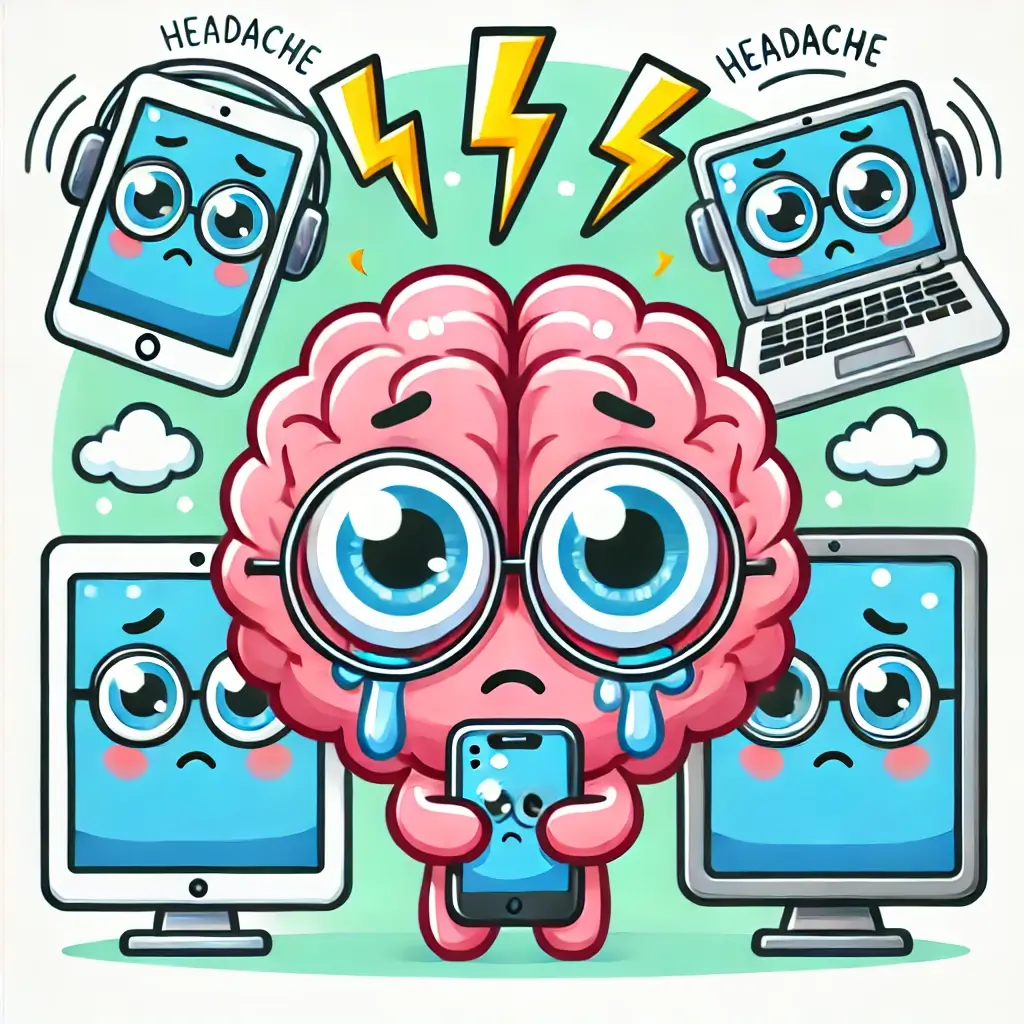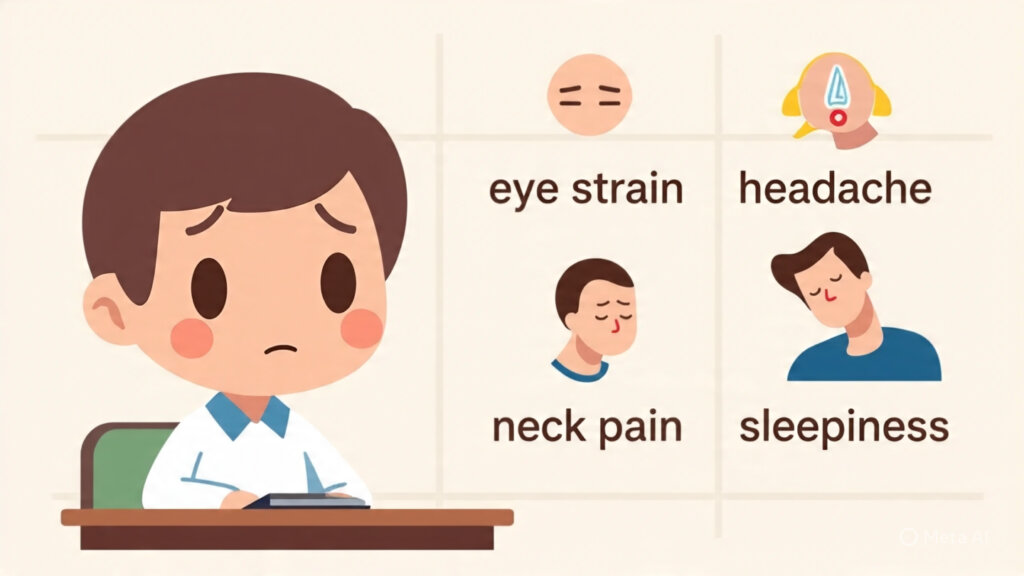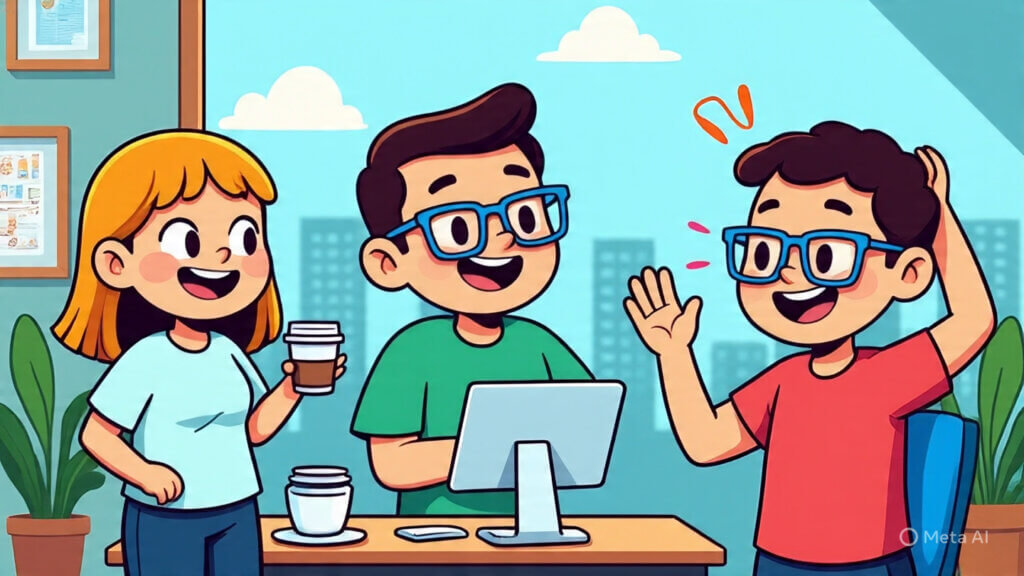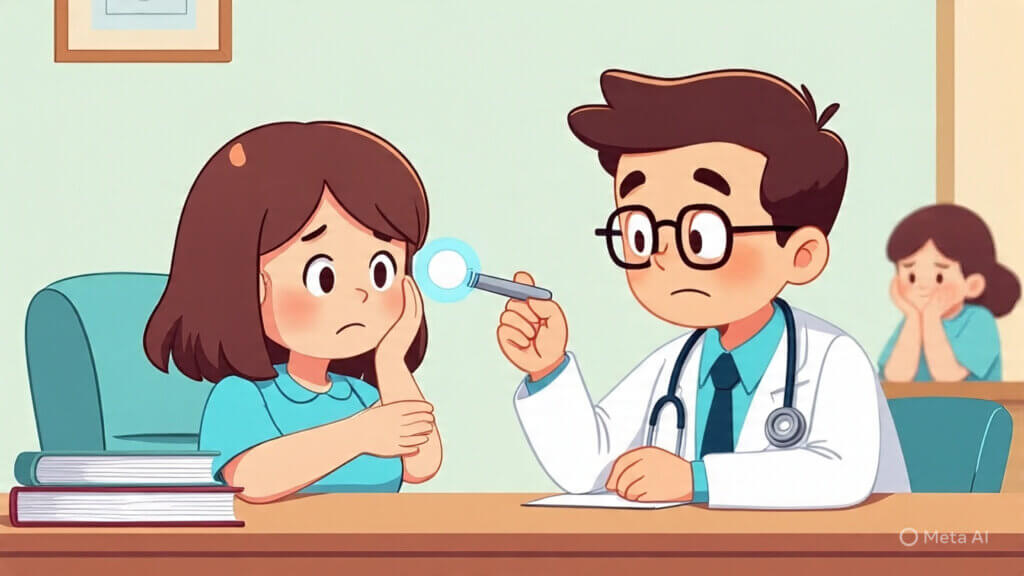Hey everyone, have you ever felt totally worn out after staring at your phone or computer for hours? digital fatigue symptoms are something many of us deal with these days, as screens are everywhere in our lives. Whether it’s work, school, or just scrolling through social media, these symptoms can sneak up and make you feel tired and uncomfortable. Let’s chat about digital fatigue symptoms and the science behind the strain, including symptoms and remedies to help you spot them and find ways to feel better.
What Is It All About
it happen when we spend too much time on digital devices like phones, computers, or tablets. It’s like your body and mind getting exhausted from all that screen time. This isn’t just feeling a bit sleepy—it’s a real thing that affects how you think, see, and even move. A study explains that digital fatigue, also called computer vision syndrome, includes eye strain, headaches, and tiredness from prolonged screen use. It’s common because our eyes aren’t made for staring at bright lights and small text all day.

Why does this matter? Well, digital fatigue can make everyday tasks harder, like reading or focusing at work. In one research, people reported blurred vision and dry eyes after just two hours of screen time. It’s not rare—about 50-90% of people who use computers a lot experience these issues. Understanding digital fatigue helps us see why taking breaks is so important. For example, kids and adults alike might feel neck pain or have trouble sleeping because of blue light from screens disrupting their natural rhythms.
This fatigue builds up over time, so noticing digital fatigue symptoms early can prevent bigger problems like chronic headaches. A report notes that without remedies, it can lead to lower productivity and even mood changes. Think of it as your body’s way of saying “hey, give me a rest!” So, if you’re feeling these, it’s time to look at your habits.
It’s also linked to how we live now, with remote work and online classes. Studies show that during the pandemic, screen time jumped, leading to more reports of digital fatigue symptoms. But the good news is, once you know what to watch for, you can fight back with easy steps.
Why Screens Cause Strain
Screens emit blue light that tires your eyes faster than natural light. Research shows this light reduces blink rates, causing dry eyes—one of the top digital fatigue. It’s like your eyes forgetting to moisturize themselves!
Poor posture while using devices adds neck and back pain to digital fatigue. A study found that slouching increases strain by 50%.
Common Signs to Watch For
digital fatigue shows up in different ways, but they’re easy to spot once you know what to look for. One of the first is eye strain—your eyes might feel sore, dry, or like they’re burning after looking at a screen. This happens because we blink less, about 66% less than normal, leading to dryness. Headaches are another big one, often starting at the front of your head or around your temples. These can feel like tension headaches from focusing too hard.
You might also notice blurred vision or trouble focusing, where things look fuzzy even if your eyesight is fine. Neck and shoulder pain come from hunching over devices, creating what’s called “tech neck.” A survey found that 70% of screen users report these pains as digital fatigue symptoms. Feeling tired all the time, even after sleeping, is common too—digital fatigue symptoms include general exhaustion because constant stimulation drains your brain.

Sleep problems are linked, as blue light messes with melatonin, making it hard to fall asleep. Mood changes like irritability or anxiety can appear, turning small things into big frustrations. Some feel dizzy or nauseous, similar to motion sickness from scrolling.
Dry mouth or jaw tension from clenching teeth while concentrating are subtler signs. If you’re experiencing several, it’s likely digital fatigue symptoms at play. A study on students showed increased anxiety with more screen time. Track your symptoms to see patterns—maybe after long video calls.
Eye-Related Symptoms
Eyes feeling tired or itchy are classic digital fatigue symptoms. Blurred vision and light sensitivity happen from reduced blinking. Double vision can occur in severe cases. Headaches often follow, linked to eye muscle strain.
Is drinking green tea good for skin – Glowing Skin Tips
Body and Mind Effects
Neck pain and fatigue are physical symptoms, while trouble concentrating shows mental strain. Research ties this to reduced productivity. Sleep disruption leads to more tiredness the next day.
Causes and Science Explained
digital fatigue symptoms come from how our bodies react to screens. The main cause is prolonged exposure to blue light, which strains eye muscles and disrupts sleep. A study found blue light suppresses melatonin by 22%, leading to fatigue. This light makes us blink less, drying eyes and causing discomfort—one of the key digital fatigue symptoms.
Poor ergonomics play a role too. Sitting hunched causes muscle tension, leading to headaches and back pain. Research shows bad posture increases digital fatigue symptoms by 40%. Constant notifications overload the brain, causing mental exhaustion. A paper on “Zoom fatigue” explains how video calls tire us from nonstop eye contact and self-view.

Multitasking on devices splits attention, raising stress hormones like cortisol. Studies link this to anxiety as digital fatigue symptoms. Dehydration worsens it, as screens make us forget to drink water. Poor lighting or glare forces eyes to work harder, adding strain.
Genetics might influence sensitivity—some people get digital fatigue symptoms faster. A report on cybersickness notes dizziness from scrolling as a vestibular issue. Understanding these causes helps with digital fatigue symptoms and remedies, like adjusting screen brightness.
Lack of breaks is huge—the 20-20-20 rule prevents buildup. Emotional factors, like work stress, amplify symptoms.
Blue Light’s Role
Blue light from screens reduces blink rate by 60%, causing dry eyes. It also affects circadian rhythms, leading to sleep-related digital fatigue symptoms. Filters can help block it.
Posture and Brain Overload
Hunching strains muscles, while constant info overloads the brain. Studies show this raises cortisol, worsening digital fatigue symptoms. Good setup and mindfulness reduce it.
Remedies and Prevention Tips
digital fatigue symptoms can be managed with simple remedies. First, follow the 20-20-20 rule: every 20 minutes, look 20 feet away for 20 seconds to rest eyes. This reduces strain, a common digital fatigue symptom.
Adjust screen brightness to match room light and use night mode to cut blue light. Studies show blue light filters lower eye fatigue by 30%. Position your screen at eye level to avoid neck pain—ergonomics cut digital fatigue symptoms like headaches.
Take full breaks—walk around or stretch every hour. Hydrate well, as dehydration worsens symptoms. Eye drops for dry eyes provide quick relief. For digital fatigue symptoms and remedies, limit screen time to under 4 hours daily if possible.
Use apps to remind you of breaks. Good lighting prevents glare. Exercise regularly to boost energy and counter fatigue. Mindfulness or meditation helps with mental digital fatigue symptoms. Eat eye-friendly foods like carrots for vitamin A.

Prevent by setting device curfews before bed. Blue light glasses block harmful rays. These steps make digital fatigue symptoms less common.
Daily Habits to Reduce Strain
Build habits like blinking more and adjusting posture. The 20-20-20 rule is gold for preventing digital fatigue symptoms. Dim screens in low light.
Tools and Gadgets
Use filters or glasses for blue light. Apps like flux adjust colors automatically, easing digital fatigue symptoms.
When to See a Doctor
Digital fatigue symptoms are usually mild, but sometimes they signal more. If headaches persist or vision blurs often, see a doctor—it might be something else. Chronic digital fatigue symptoms like ongoing tiredness could link to sleep issues or anxiety. Persistent symptoms need professional check.
Eye doctors can test for strain-related problems. If neck pain lasts, a physiotherapist helps. Mental health pros address mood changes from digital fatigue symptoms. Don’t ignore if symptoms disrupt daily life—early help prevents worsening.
For kids, watch for complaints after screen time. Studies show excessive screens affect development. Regular check-ups ensure it’s just digital fatigue symptoms, not vision issues.
Therapy or counseling for burnout is useful. Knowing when to seek help keeps digital fatigue symptoms from controlling your life.

Signs It’s Serious
If digital fatigue symptoms include severe headaches or nausea, get checked. Vision changes need immediate attention.
What are common digital fatigue symptoms?
Eye strain, headaches, dry eyes, and blurred vision.
How to relieve digital fatigue symptoms?
Follow the 20-20-20 rule and use artificial tears.
Can digital fatigue symptoms affect sleep?
Yes, blue light disrupts melatonin, causing insomnia.
What causes digital fatigue symptoms?
Prolonged screen time, poor lighting, and reduced blinking.
Are there remedies for digital fatigue symptoms?
Take breaks, adjust screen settings, and stay hydrated.
Disclaimer : we are not a doctor, please consult your doctor if you have any symptom.
